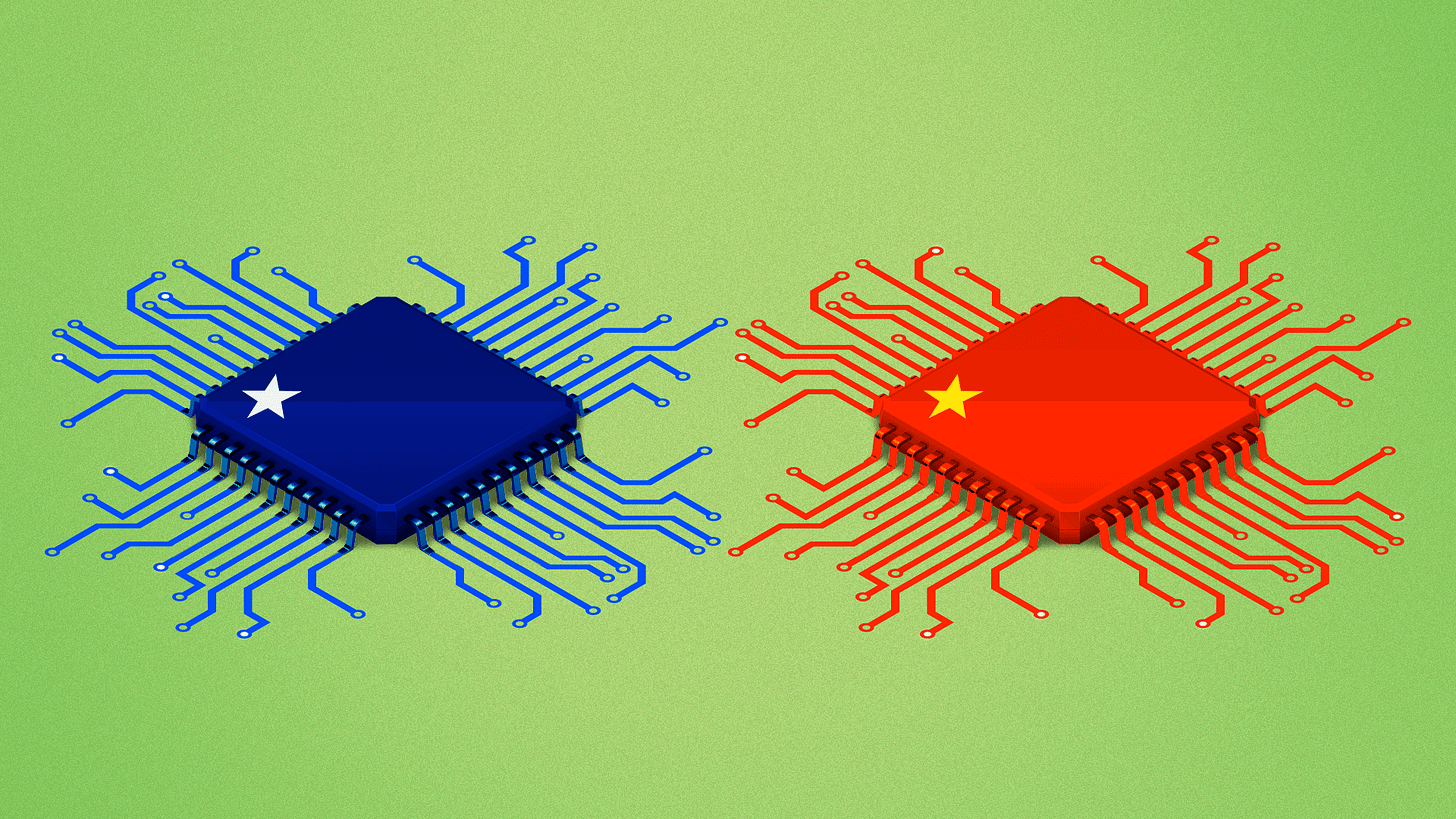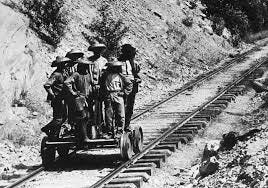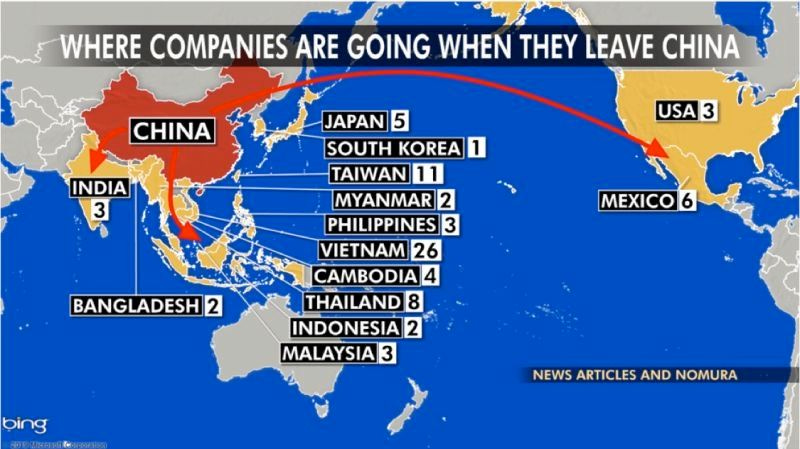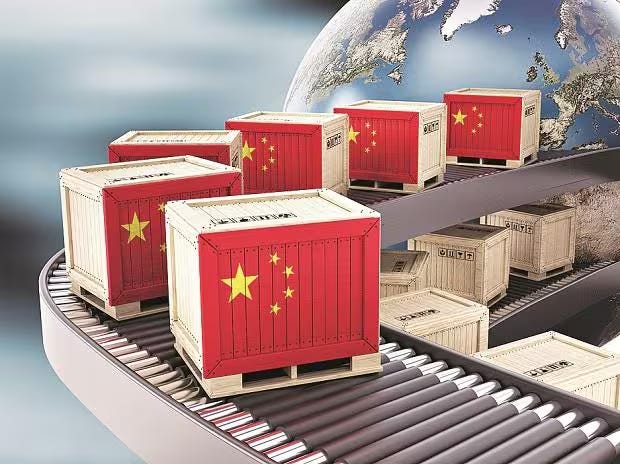Years ago, Apple CEO Tim Cook recounted that for Steve Jobs,
“Good wan't good enough," Cook continued. "It has to be great. As Steve used to say "insanely great."
Well, the current geopolitical realities between the US and China, are going to make doing any of that ‘insanely hard’ for the foreseeable future.
It’s been building for years, and as expected for weeks now, the Biden administration moved forward with more curbs on US Tech investments in China, this time via Executive actions:
“The new limits, aimed at preventing American help to Beijing as it modernizes its military, escalate a conflict between the world’s two largest economies.”
“The order will prohibit venture capital and private equity firms from pumping more money into Chinese efforts to develop semiconductors and other microelectronics, quantum computers and certain artificial intelligence applications. Administration officials stressed that the move was tailored to guard national security, but China is likely to see it as part of a wider campaign to contain its rise.”
As a techno-optimist, it’s encouraging to see the attempt to keep things restricted to the ‘national security’ domain. And minimize impact on the broader critical trade relationship between the world’s two largest economies. There remains a desire on both sides to thread the needle as it were, while the political Kabuki theater continues. As Axios reminded us not too long ago (their illustration below):
“Longstanding threats from both the U.S. and China to claw apart the two countries' interdependent tech economies are finally giving way to reality.”
This ‘threading the needle’ with China is critical for the economic and political well-being of the US for decades to come. As I said in my three-year AI outlook:
“Working with China, or ‘the China Issue’, remains the big, big difference this time vs previous major Tech waves. The geopolitical competition with China, and deglobalization/reglobalization that is underway currently, is a major headwind our entrepreneurs have not had to deal with at this scale before. It’s a wild card that possibly up-ends the Math for all of the opportunities ahead.”
Chinese tech companies are racing to put in over $5 billion in orders for Nvidia AI GPU chips ahead of the export curbs. On the other side, as the FT notes, US investors “face uncertain future in China after tech ban”:
“Seeing the writing on the wall, though, many have already pulled back. Buyout groups struck deals in China worth $47bn in 2021, but that fell rapidly to just $2.4bn in 2022 and $2.8bn so far this year, figures from Dealogic show. One of the most drastic pre-emptive moves came from Sequoia Capital. In June, the Silicon Valley venture capital firm said it was carving its China arm from its US and European operations, and also spinning off its India business. “The era of American venture capital firms investing in China is over now,” said one European venture capital investor.”
But the rules are a double-edged sword, as the piece highlights:
“But the order’s inclusion of AI — a technology that businesses across many sectors are using — could deter US investors from buying into a wide range of Chinese companies.”
“Artificial intelligence is everywhere and most of it is dual use . . . you can’t sort of put it in a box,” said Marcia Ellis, global co-chair of the law firm Morrison Foerster’s private equity practice.”
Ironically, some of the biggest beneficiaries of the rise of companies like TikTok (Bytedance) have been western institutional investors, or ‘LPs’ (Limited Partners). In the past major Tech waves (via Alibaba, Tencent and many others), they made billions in returns for their ultimate beneficiaries, which were pension funds and other downstream investors in institutional funds. That is a lot tougher going forward with the AI Tech wave.
As I outlined in my recent second half 2023 AI outlook piece, the more important point is that US technology and growth priorities require a global approach. Especially given the markets are a world with over eight billion people, not only 350 million within our own borders. As I said in a piece on the TikTok political drama:
“Critical growth opportunities for technology waves occur across national boundaries. That’s how we figured out how to use air travel to help connect the world as the safest and fastest set of technologies for net good. And shipping containers that the US invented in the 1950s, and the common shipping infrastructure developed to enable globalization and do net good across the world for countries both rich and poor.“
“And in the process lift more people out of abject poverty that at any other time in history. Looking at you of course China for getting that right.”
“Insanely hard working and competing Chinese people drove that at scale. Others preceded at a lesser scale, and many are fast following.”
It’s not a historical accident that over 20,000 Chinese workers helped build the US railroads that connected ‘Sea to Shining Sea’ in the 19th century, and kick-started ‘the world’s largest economy’.”
“Leland Stanford, president of Central Pacific, former California governor and founder of Stanford University, told Congress in 1865, that the majority of the railroad labor force were Chinese. Without them,” he said, “it would be impossible to complete the western portion of this great national enterprise, within the time required by the Acts of Congress.”
Aside from the high minded global trade aspirations, the reality is that making tech stuff at Scale, across the technology stacks is HARD. The fusing of talent, hardware, software and the intricate array of inter-weaving products and services, is a global business. Not to mention navigating ever-changing regulatory regimes across an intricate array of domains. It requires massive flows of trained people, and supply chains at a scale not manageable by single countries.
And it’s not an accident that it took Tim Cook to take Steve Jobs’ ‘insanely great’ visions and turn Apple into a globally scaled maker of some of the most complex products on earth. And the same team at Apple is focused on the hard task of diversifying its supply chain today:
“The operations that Apple orchestrates are so complex and massive — including factory hubs the size of western cities in China — that it is not at all clear the world’s biggest company has any viable options to overhaul the way it rolls out $316bn worth of iGadgets each year.”
“Nobody comprehends the scale of Foxconn’s manufacturing efforts, until you see it with your own eyes,” says Brian Blair, a former tech analyst who has repeatedly toured the key Apple supplier’s facilities in China. “It’s like trying to describe New York City to a villager.”
The scale of the Math is hard to appreciate unless one goes into the weeds:
“Virtually all of Apple’s hardware is made in China. The company directly employs only 14,000 people in the country, but it monitors the weekly hours of 1.5mn workers in its global supply chain, the vast majority in China.“
These enormous operations underpin Apple’s ascent to being the world’s largest company — one that ships up to a quarter of a billion iPhones a year. The candidate in the best position to become a rival to China as a new hub of manufacturing is India, which is expected to surpass it as the world’s most populous country this year.”
It’s important to understand that in a high-turnover endeavor to build precision critical tech products at the highest levels of quality and scale, the numbers of trained people involved are massive. Over the last two decades, Apple alone has indirectly employed over 30 million people across the supply chains in cities across China. Remember the population of Taiwan is less than 25 million souls.
And expanding these supply chains to countries like India, Vietnam, Malaysia, Thailand and others is easier said than done. The options aren’t as wide and deep as needed yet:
Even India, with its population of over 1.4 billion surpassing China this year, does not YET have the skilled labor at the scale needed for transplanted technology production from China. The recent step back by Apple vendor Foxconn in it’s $19 billion chipmaking deal in India is a case in point. The details get complicated, but the availability of trained people at scale and staffing ramp-ups were critical issues.
It takes decades to build the global supply chains that allowed Apple to become a three trillion dollar market cap global leader. And by extension, other US tech companies like Nvidia and others that are extending that global trail.
And recognize that the technology industry is just a microcosm of how the US (and most of the world), gets almost everything else made mostly in China as well.
What’s true for Apple is also true for Walmart and Costco. And the long lauded 'American way of life’. There are entire cities in China that make most of the buttons and zippers in the world. And dozens of other cities that make so much more. There’s a reason why an iPhone costs a few hundred dollars and not a few thousand. And why a dress at Walmart or via Shein costs a few dollars and not a hundred.
Politics are perennial, cyclical games, played within and across national boundaries. Balancing the secular, clockwork-like Moore’s law driven needs of technologies globally, with near-term political realities and 24/7 media cycles online and off, remain the challenge of our day.
Goldman Sachs projects that AI could add over $7 trillion to the currently $100 plus trillion world economy over the next decade. Much of what we’ve discussed here are headwinds against that possible growth.
These geopolitical realities will make it harder than ever for our best entrepreneurs to make all the Math work at Scale. Whether they’re working at startups or big incumbents.
It’s going to be ‘insanely hard’, to do the ‘insanely great’ things that Steve Jobs exhorted his team to achieve. Maybe AI can help with some of that. Will of course have more on this subject in posts ahead. Stay tuned.
(P.S. Have talked a lot about Apple in this post, and how it took the ‘insanely great’ work by both Steve Jobs and Tim Cook to get Apple to where it is today.
For a deeper look at Apple in its current financial context, would recommend this detailed piece by Maverick Equity Research. Some eye-popping numbers over the years, not the least of which is how Warren Buffett built on his extraordinary decades long track record at Berkshire, by presciently adding Apple in 2016, and contributing to almost half of where Berkshire is today.)
(NOTE: The discussions here are for information purposes only, and not meant as investment advice at any time. Thanks for joining us here).








